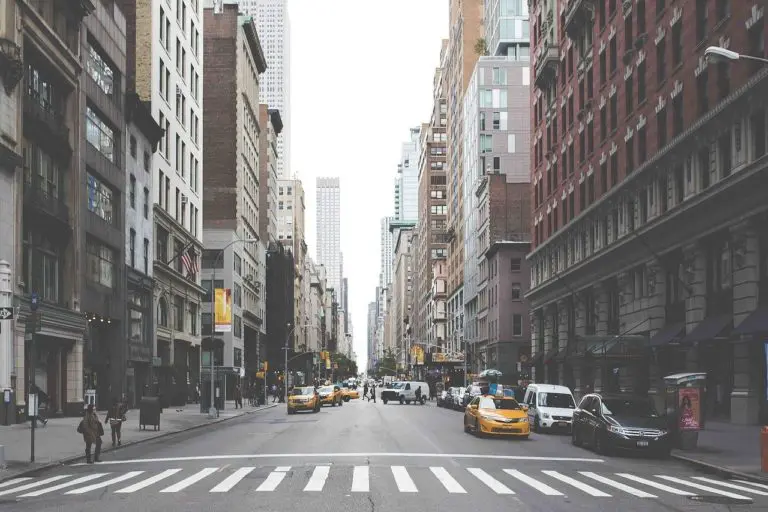The National Highway Traffic Safety Administration released its pedestrian fatality reports for 2020. The reports showed that the number of pedestrian fatalities have increased during the pandemic and have reached the largest number since 2007. To be exact, 38,680 pedestrians were killed in car accidents in 2020, marking a 7.2 percent increase from 2019. Experts are developing many ideas to prevent the number from rising even more in following years.
- In 2020, 146 pedestrians were fatally hit on Pennsylvania roads.
- According to a report published by Governors Highway Safety Association (GHSA) In 2019 pedestrian-related crashes account for 17% of all traffic deaths.
Statistics Behind Pedestrian Fatalities
The GHSA’s report provides some surprising insights about how, when and where pedestrian accidents and fatalities occurred. The data showed –
- Most pedestrian deaths occurred at night on local roads and away from intersections. The number of pedestrians hit at night increased by 54% while there was a 16% rise in the number of pedestrian fatalities in the daylight.
- 50% of the pedestrian accidents that led to pedestrian fatality occurred under the influence of alcohol by the driver and/or pedestrian.
- Other culprits are risky driving behaviors like distraction, driving while texting, speeding, etc.
- Passenger cars cause the largest number of fatal pedestrian accidents. However, large vehicles like SUVs have caused an increased number of pedestrian deaths, 69% compared to 46% caused by passenger cars.
Pedestrian Safety in Pennsylvania Remains a Growing Concern
Pennsylvania personal injury lawyer, Stuart Carpey, handles pedestrian accident cases for victims of car accidents across Pennsylvania. In an effort to bring attention to the unbalanced allocation of funds earmarked for Pedestrian Safety in Pennsylvania, he created this infographic for others to use. He believes in bringing attention to these statistics and educating pedestrians before they cross the most dangerous Pennsylvania streets. Check out the alarming statistics in the infographic below and stay safe when crossing the street!
Important Tips to Improve Pedestrian Safety
There are several reasonable precautions pedestrians can take when crossing the street to stay safe.
- Cross at a crosswalk or intersection, and wear bright clothing at night so that other drivers can see you even in the dark.
- Be aware of any oncoming traffic and look both ways.
- Walk on the sidewalk rather than in the street whenever possible, and if no sidewalk is available, make sure to face traffic and walk on the shoulder of the road.
- Put your cell phone down and be aware and reactive while crossing the street.
- Securely hold on to children when crossing the street
- Use the available traffic control devices, such as crosswalks, light signals, and pedestrian flags, to one’s advantage but remember that they are no guarantee of safety.
- Do not make the assumption that drivers are competent or can see you. Make eye contact when possible and give yourself enough distance between you and oncoming traffic when crossing the street outside of a crosswalk.
- As the driver, make sure to get a full night’s rest before getting behind the wheel to ensure that you are completely aware of your surroundings, and yield to pedestrians in crosswalks and intersections.
- Give special attention to vehicles that are allowed to make turns when the crosswalk is clear, such as right turns on a red light or left turns on a green arrow. It is possible that drivers may overlook pedestrians trying to cross at these times, especially when it is dark.
As a pedestrian, right-of-ways don’t matter in terms of your safety. The simple fact that you have the right-of-way does not prevent vehicles from colliding with you. There are distracted, inattentive, incompetent, and inebriated drivers on the road who don’t have pedestrian safety as their top priority. Treat every oncoming vehicle as a potential danger and don’t assume that the driver will see you and slow down. When away from the crosswalk, assume that vehicles will maintain their speed and may even accelerate to give yourself enough time to cross with these considerations in mind.
How To Reduce Pedestrian Accidents?
NHTSA: The National Highway Traffic Safety Administration hopes to secure an effective global safety initiative. Among the ideas the NHTSA wants to explore is a proposal to redesign the hoods and bumpers of automobiles. The proposed design would absorb the impact, theoretically reducing the damage done to a pedestrian in the event of an accident. This idea, however, would require a reversal of a U.S. law which compels manufacturers to produce cars with strong bumpers which will withstand low-speed impacts.
Automakers: Many car manufacturers are developing crash-avoidance and automatic braking technologies which will help prevent pedestrian deaths by programming cars to recognize people walking in the driving path. BMW, Honda, and Toyota are all working on their own version of these technologies. For example, BMW’s “Night Vision” system emits a warning if its built-in sensors pick up a pedestrian crossing in the dark.
For now, the best we can do is to increase our collective knowledge of common pedestrian dangers. To start, keep these facts in mind:
- 97 percent of pedestrian fatalities occurring in the U.S. happen in urban areas.
- 54 percent of pedestrian fatalities occurring in the U.S. happen at night.
For more information on pedestrian death trends, see some of the other articles on the Carpey Law website. We have provided information and resources on this subject, from common causes of pedestrian accidents to the issue of distracted pedestrians. Or visit our blog category page to browse our many personal injury articles!
If you’ve been injured in a pedestrian accident or if someone you love has been seriously injured or killed, do not hesitate to contact Stuart Carpey. He is an experienced pedestrian accident lawyer who is committed to doing everything in his power to help you earn compensation for your financial and emotional damages. Carpey Law operates from two conveniently located offices in Philadelphia and Plymouth Meeting, Pa.

Stuart A. Carpey, who has been practicing as an attorney since 1987, focuses his practice on complex civil litigation which includes representing injured individuals in a vast array of personal injury cases.


